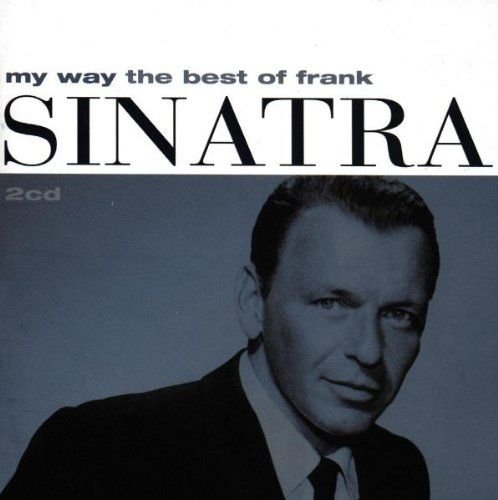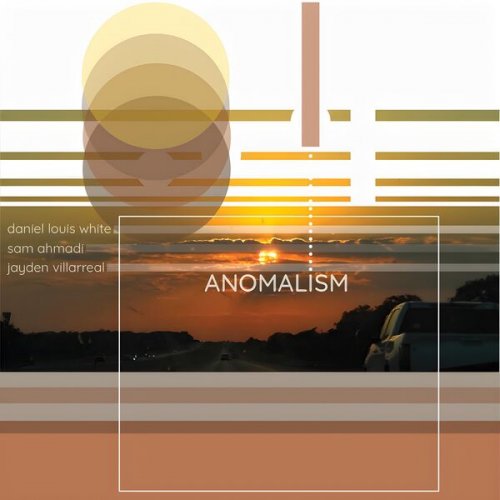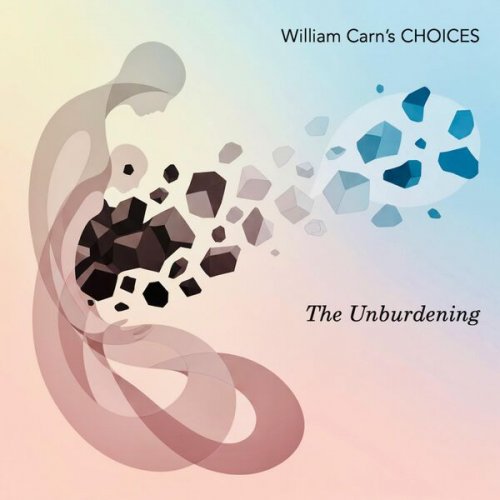John Tilbury / Keith Rowe / Kjell Bjorgeengen - Sissel (2018)

Artist: John Tilbury / Keith Rowe / Kjell Bjorgeengen
Title: Sissel
Year Of Release: 2018
Label: Sofa
Genre: Avantgarde, Experimental, Modern Classical, Contemporary, Free Improvisation
Quality: Mp3 320 kbps / FLAC (tracks)
Total Time: 48:23 min
Total Size: 97 / 221 MB
WebSite: Album Preview
Tracklist:Title: Sissel
Year Of Release: 2018
Label: Sofa
Genre: Avantgarde, Experimental, Modern Classical, Contemporary, Free Improvisation
Quality: Mp3 320 kbps / FLAC (tracks)
Total Time: 48:23 min
Total Size: 97 / 221 MB
WebSite: Album Preview
1. Sissel 48:25
It is impossible to begin with anything other than death. Two deaths have been placed, as it were, in advance of the piece itself: one, in the painting from Poussin’s later period, which serves as the ‘text’ of the performance. The other is the passing of Bjørgeengen’s wife—for whom the piece is named—just weeks before the date of the performance.
First, then, the text: Landscape with the Ashes of Phocion dramatises the aftermath of a real execution ca 318 BCE. In the foreground: the ashes of Phocion, a politician who fell afoul of the ruling order. He was killed by the state, his body not deemed fit for burial and not even permitted to rot within city limits. We see Phocion’s widow, covertly gathering his ashes for a proper burial, with a servant standing lookout behind. Yet the entire drama—though literally foregrounded—almost vanishes before the colossal scene behind: people lounging and talking, trees and crags, a citadel unfurling to the horizon. It is a space, a sprawl, that engulfs most of the canvas, exceeding everything else in its scope.
Rowe also highlights this characteristic of Poussin’s works in his own great exegesis of Sissel. Poussin himself wrote, of his Landscape with Pyramus and Thisb, that the true subject of the painting were not the titular characters but the brewing tempest behind them—or more precisely, the “impetuous wind” itself. That painting, too, presents a tragedy on the margin of oblivion. They are made small, not by some grander thing, some greater drama, but by and within the brute presentation of the total situation. Rowe is thus right in noting that, whatever Poussin paints, his true subject seems always to be that massive space, irrelative and indifferent to the dramas of persons, right in the middle of the canvas.
Rowe speaks in the same text of ‘muteness’—specifically associating it with the non-human nature that presides in the wings of almost every Poussin painting: beech, poplar, pine. The trees, he says, watch without speaking—they are mute witnesses, aware of but indifferent to the intermingled calamity and mundanity that constitute Poussin’s complex scenes. Rowe ties this sense of muteness to his own role in the performance—and yet Sissel is hardly spare. Nothing has been achieved if space is represented merely as a non-being, nature as an absence or as the negation of speech.
Accordingly, the performance is by no means an exercise in muteness. Indeed, it’s generous, almost dense by the standard Tilbury and Rowe have previously set. It is true that Tilbury’s piano—always uncannily beautiful, given its severe economy—stands mostly alone in the opening of the piece. For a while, Rowe and Bjørgeengen make only hesitant and halting contributions. Eventually, though, they establish something like a milieu of hums, buzzes, placeable and unplaceable sounds, with Tilbury now taking a commentary role. The performance immerses us in a space that feels voluminous and populated, which has a dynamic of its own. It is, for the most part, not mournful or wistful, but neither does it reach for some kind of solace. Everyone knows or will know the feeling, the shock before grief, in the immediate wake of a death: the anaesthetic disbelief that everything else in the world is still there, more or less the same. Not ‘life goes on’ but just ‘it goes on’, not watching but insensate, not mute but dumb. The same place, the same things, but with a violent opacity.
This is the moment I return to in trying to grapple with the real and painted deaths embedded in the antecedents of the performance. But it is worth saying that it is also just a very, very good performance, and easily my favourite Rowe/Tilbury effort to date. To what extent is this connected to the addition of Bjørgeengen as a performer, or to the extraordinary circumstances of the performance itself? These questions run, at some point, against the pleasure of the piece itself, mitigating its sheer and voluptuous presence.
First, then, the text: Landscape with the Ashes of Phocion dramatises the aftermath of a real execution ca 318 BCE. In the foreground: the ashes of Phocion, a politician who fell afoul of the ruling order. He was killed by the state, his body not deemed fit for burial and not even permitted to rot within city limits. We see Phocion’s widow, covertly gathering his ashes for a proper burial, with a servant standing lookout behind. Yet the entire drama—though literally foregrounded—almost vanishes before the colossal scene behind: people lounging and talking, trees and crags, a citadel unfurling to the horizon. It is a space, a sprawl, that engulfs most of the canvas, exceeding everything else in its scope.
Rowe also highlights this characteristic of Poussin’s works in his own great exegesis of Sissel. Poussin himself wrote, of his Landscape with Pyramus and Thisb, that the true subject of the painting were not the titular characters but the brewing tempest behind them—or more precisely, the “impetuous wind” itself. That painting, too, presents a tragedy on the margin of oblivion. They are made small, not by some grander thing, some greater drama, but by and within the brute presentation of the total situation. Rowe is thus right in noting that, whatever Poussin paints, his true subject seems always to be that massive space, irrelative and indifferent to the dramas of persons, right in the middle of the canvas.
Rowe speaks in the same text of ‘muteness’—specifically associating it with the non-human nature that presides in the wings of almost every Poussin painting: beech, poplar, pine. The trees, he says, watch without speaking—they are mute witnesses, aware of but indifferent to the intermingled calamity and mundanity that constitute Poussin’s complex scenes. Rowe ties this sense of muteness to his own role in the performance—and yet Sissel is hardly spare. Nothing has been achieved if space is represented merely as a non-being, nature as an absence or as the negation of speech.
Accordingly, the performance is by no means an exercise in muteness. Indeed, it’s generous, almost dense by the standard Tilbury and Rowe have previously set. It is true that Tilbury’s piano—always uncannily beautiful, given its severe economy—stands mostly alone in the opening of the piece. For a while, Rowe and Bjørgeengen make only hesitant and halting contributions. Eventually, though, they establish something like a milieu of hums, buzzes, placeable and unplaceable sounds, with Tilbury now taking a commentary role. The performance immerses us in a space that feels voluminous and populated, which has a dynamic of its own. It is, for the most part, not mournful or wistful, but neither does it reach for some kind of solace. Everyone knows or will know the feeling, the shock before grief, in the immediate wake of a death: the anaesthetic disbelief that everything else in the world is still there, more or less the same. Not ‘life goes on’ but just ‘it goes on’, not watching but insensate, not mute but dumb. The same place, the same things, but with a violent opacity.
This is the moment I return to in trying to grapple with the real and painted deaths embedded in the antecedents of the performance. But it is worth saying that it is also just a very, very good performance, and easily my favourite Rowe/Tilbury effort to date. To what extent is this connected to the addition of Bjørgeengen as a performer, or to the extraordinary circumstances of the performance itself? These questions run, at some point, against the pleasure of the piece itself, mitigating its sheer and voluptuous presence.
![Mick Rossi - Songs from the Broken Land (2024) [Hi-Res] Mick Rossi - Songs from the Broken Land (2024) [Hi-Res]](https://www.dibpic.com/uploads/posts/2025-12/1766399499_592x592.jpg)




![Richard Carr, Czech National Symphony Orchestra, Vladimir Martinka - Richard Carr: The Leap (2025) [Hi-Res] Richard Carr, Czech National Symphony Orchestra, Vladimir Martinka - Richard Carr: The Leap (2025) [Hi-Res]](https://img.israbox.com/img/2025-12/22/0ruhq82oeu9h4oypzf8u61qbv.jpg)


